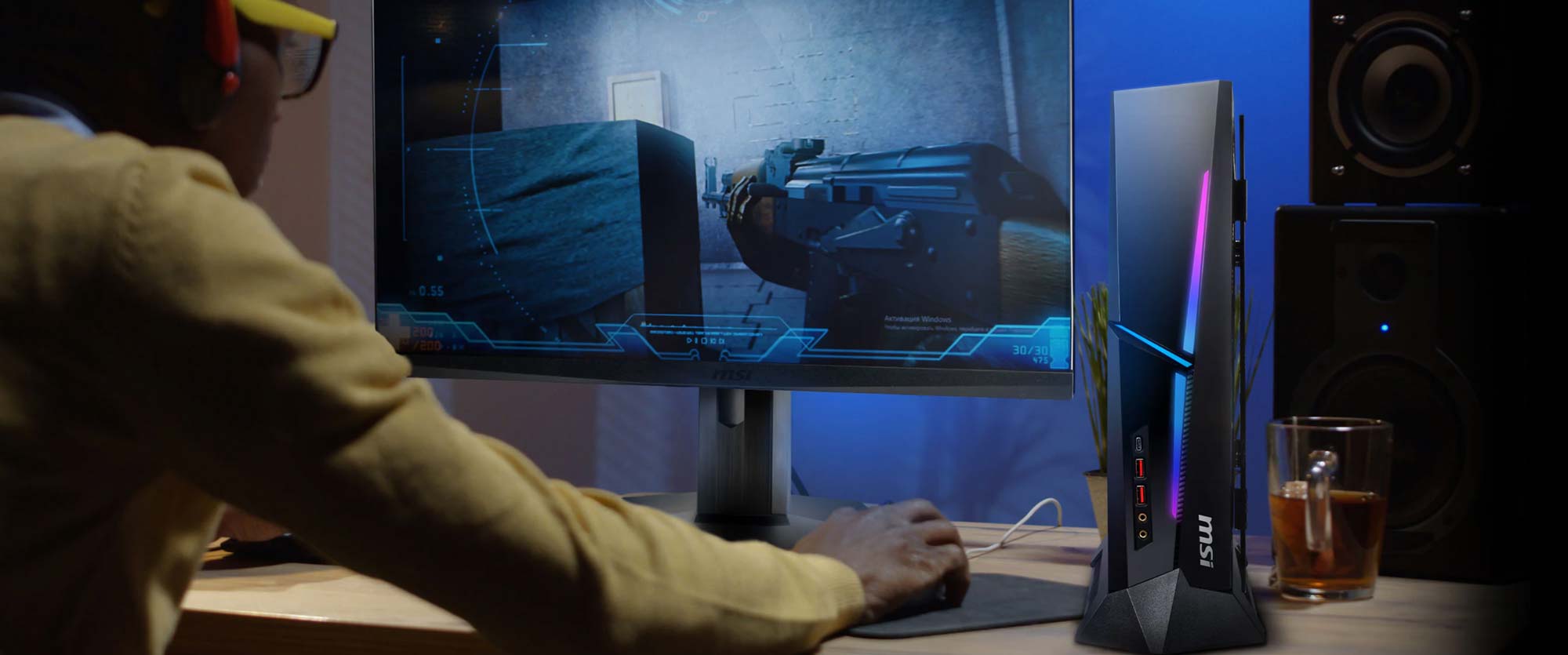Tom's Guide Verdict
The MSI MEG Trident X looks great, doesn't take up much space, and runs demanding games at top settings. It's not cheap, however.
Pros
- +
Powerful performance
- +
Quiet cooling
- +
Smart, compact design
- +
Easy to take apart
Cons
- -
Expensive
- -
Subpar peripherals
Why you can trust Tom's Guide
Processor: Up to Intel Core i9-10900K, 3.7-5.3 GHz
RAM: Up to 64 GB
Graphics Card: Up to Nvidia GeForce RTX 2080 Ti
Storage: Up to 1 TB SSD + 1 TB HDD
Accessories: MSI Clutch GM11 Mouse, MSI Vigor GK30 Keyboard
The MSI MEG Trident X is a perfect example of "you get what you pay for" in the world of gaming PCs. From design and performance perspectives, it's hard to ask for more than what the Trident X offers: a striking, compact chassis with powerful enough hardware to run the latest and greatest titles in gorgeous 4K resolution. The only real caveat is that you'll have to pay for the privilege: between $2,300 and $3,300, to be precise.
Still, if you were looking to spend upwards of $2,000 or $3,000 on a gaming machine, the Trident X makes a strong case for itself. Games play beautifully and everyday productivity tasks pose no challenge. On top of that, the machine runs quietly, and makes upgrades simple.
The mouse and keyboard included with the Trident X are pretty weak, and MSI's proprietary software doesn't add much to the overall experience. But as long as you can stomach the asking price, the Trident X is one of the best gaming PCs — indeed, one of the best computers period — you can buy, as well as one of the prettiest.
MSI MEG Trident X review: Price and availability
The MSI MEG Trident X starts at $2,300 for a model with an Intel Core i7 processor, an Nvidia GeForce RTX 2070 Super GPU, 32 GB RAM and a 1 TB HDD. A mid-range model features an Intel Core i7 processor, an Nvidia GeForce RTX 2080 Ti GPU, 32 GB RAM and a 1 TB SSD, and retails for $2,800. The highest-end model, which we reviewed, contains an Intel Core i9 processor, an Nvidia Geforce RTX 2080 Ti GPU, 64 GB RAM, a 1 TB SSD and a 1 TB HDD, and retails for $3,200.
You can pre-order the computer from Amazon, Adorama or B&H, and orders should begin shipping at the end of August.
MSI MEG Trident X review: Design
Generally speaking, gaming PCs are built for function, not form. "Big black box with a few blue highlights" is usually the best you can hope for. The MSI MEG Trident X, on the other hand, is a striking, gorgeous machine, full of tasteful angles and colorful lighting. Moreover, the Trident X is an admirably small machine, at 15.6 x 15.1 x 5.1 inches and 14.4 pounds.
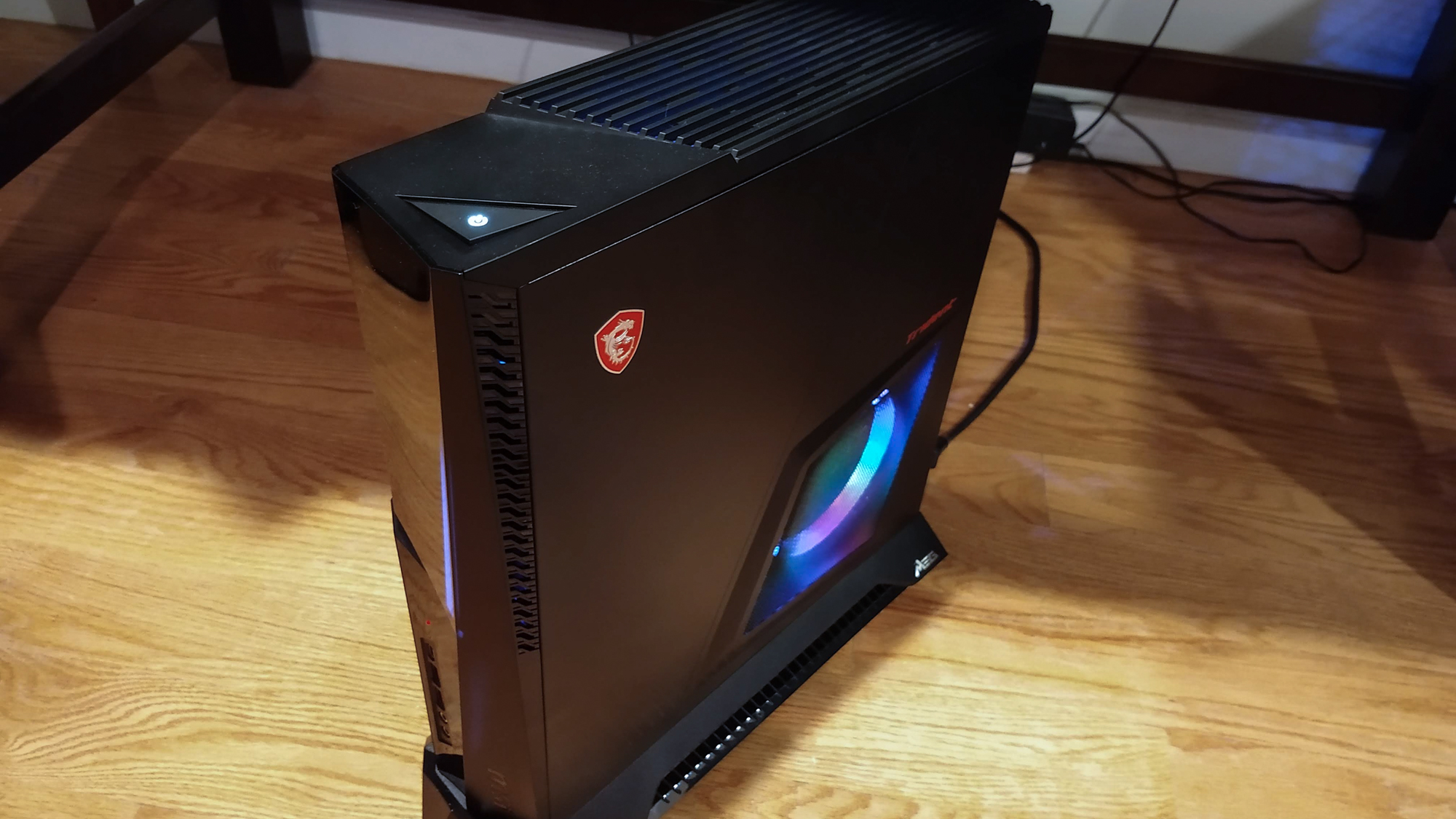
The Trident X is essentially a rectangular box, although it has some unexpected angles on the front, top and sides, making it look a little like a modern art piece. On the front, there are two triangular LEDs.
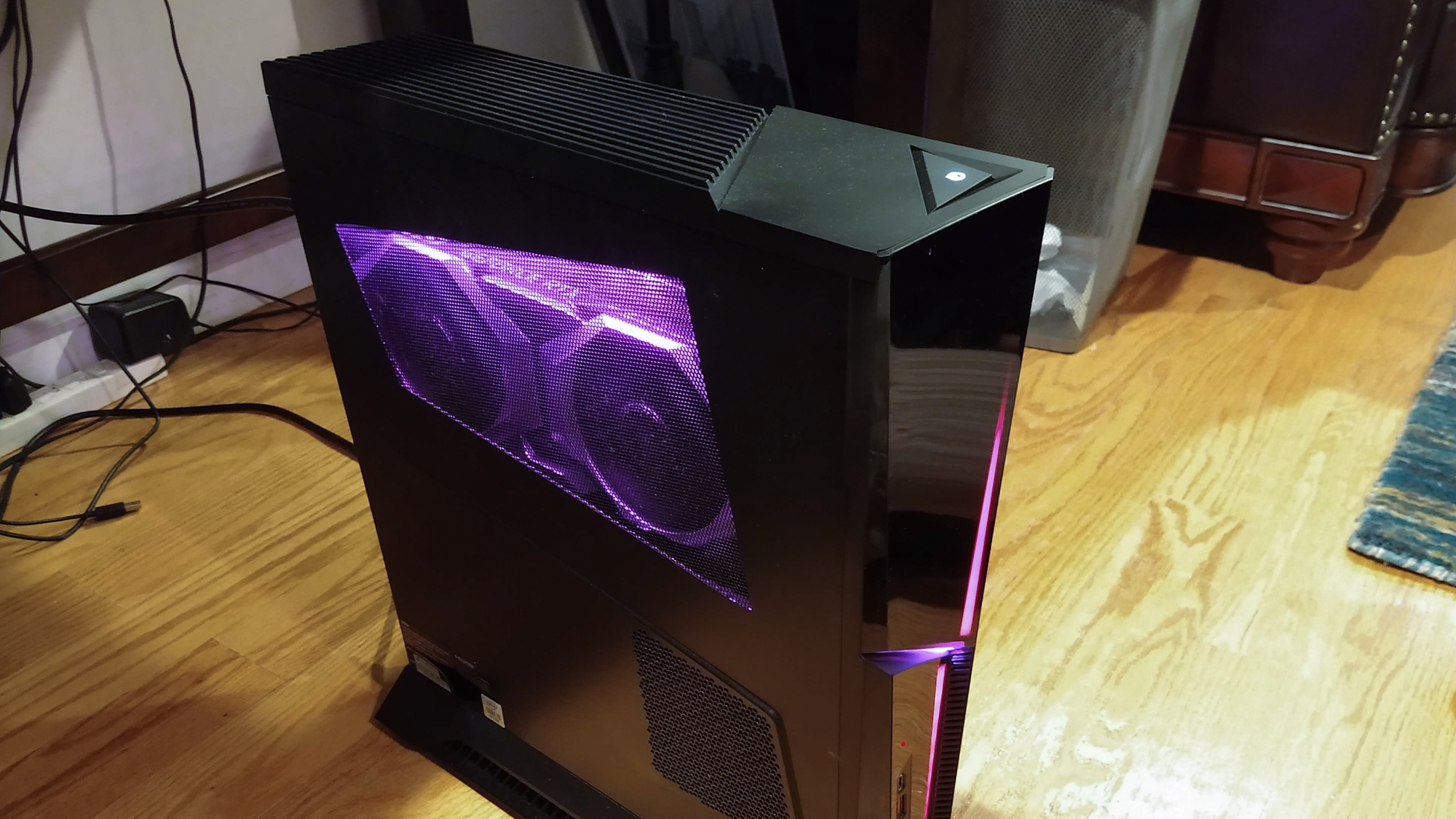
On the left, there's a vent that showcases an RGB fan. On the right, there's a swappable panel, depending on whether you prefer opaque plastic or clear glass. (The glass is heavy and breakable. Do not drop it.)
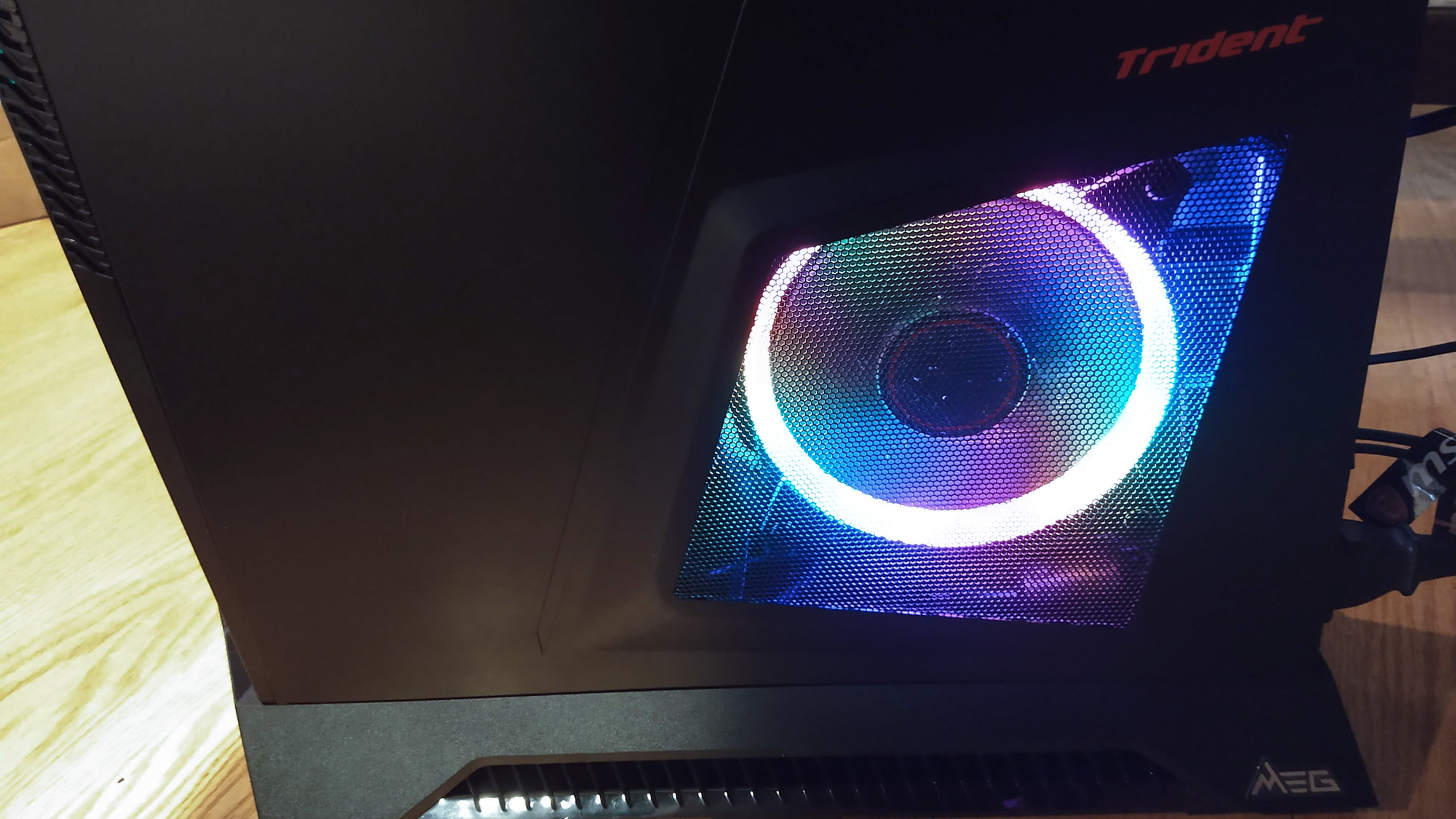
It's almost a shame that I had to set the Trident X up on my floor, because it's a very pretty machine.
MSI MEG Trident X review: Ports and upgradability
The MSI MEG Trident X has plenty of ports. On the front, you get a USB-C ports, two USB-A ports and two 3.5 mm audio jacks: one for mic, one for audio. On the back, you get five USB-A ports, one Thunderbolt USB-C port, five audio ports, one optical audio port, three DisplayPorts, one HDMI port and an Ethernet port.
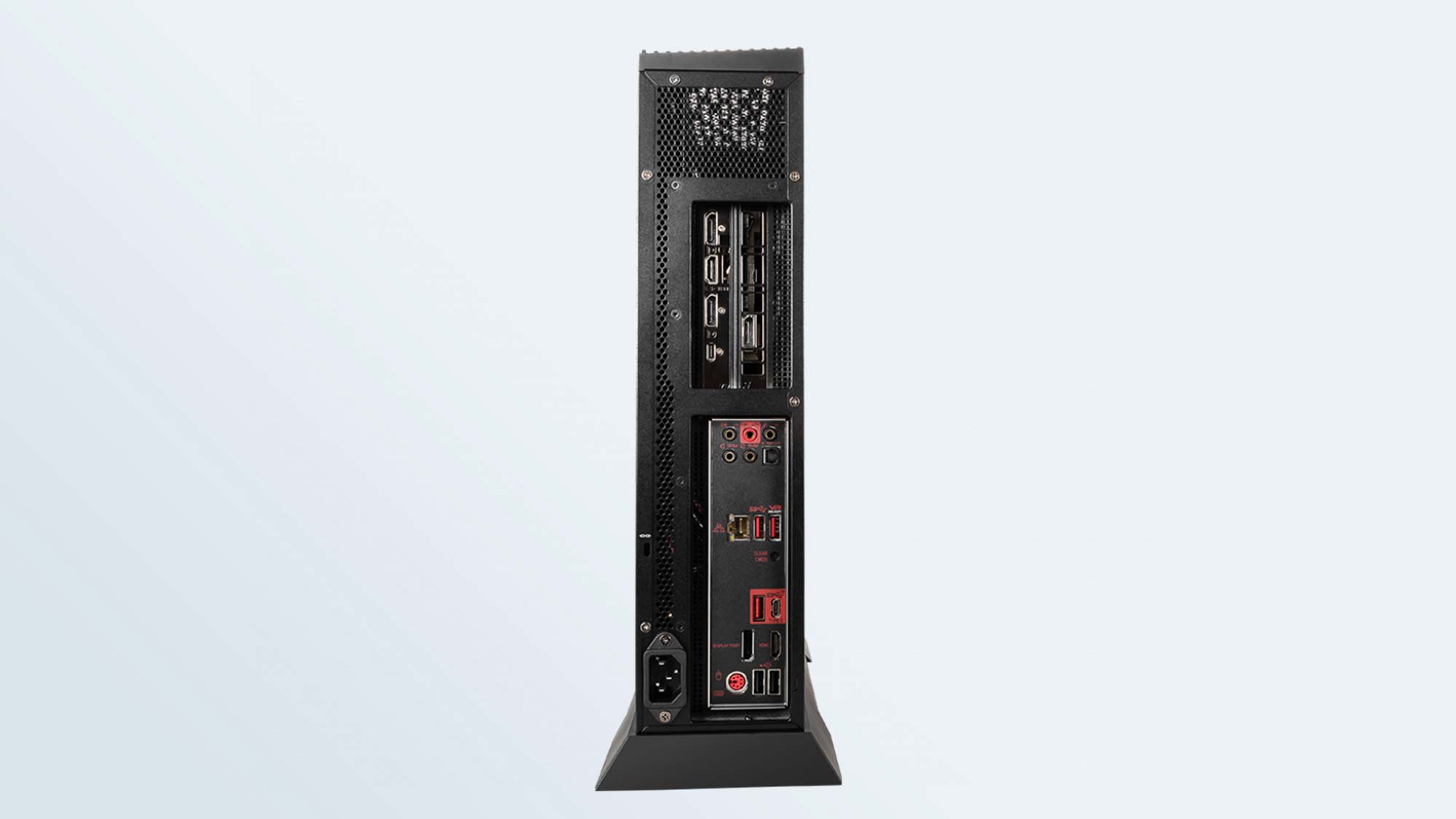
While I wish there were more ports on the front and fewer in the back, the overall number is generous, and all the important ones are accounted for. My only big complaint was that if you plug in a USB-C dongle in the front, it will block access to one of the USB-A ports, which can be inconvenient, depending on your setup.
To upgrade the machine, all you need to do is disconnect a few screws and remove a side panel. Inside, it's clean and spacious, although you'll need a small screwdriver to remove many components. Also, good luck getting the wiring as pretty as MSI did, once you start installing your own components.
MSI MEG Trident X review: Gaming performance
Since our MSI MEG Trident X came equipped with an Nvidia GeForce RTX 2080 Ti, it didn't surprise me that the system can run demanding games at a steady clip. It did surprise me, however, that the system could do so very quietly. However MSI rigged the cooling system, the Trident X is very nearly silent for productivity purposes, and stays fairly quiet for all but the most demanding games.
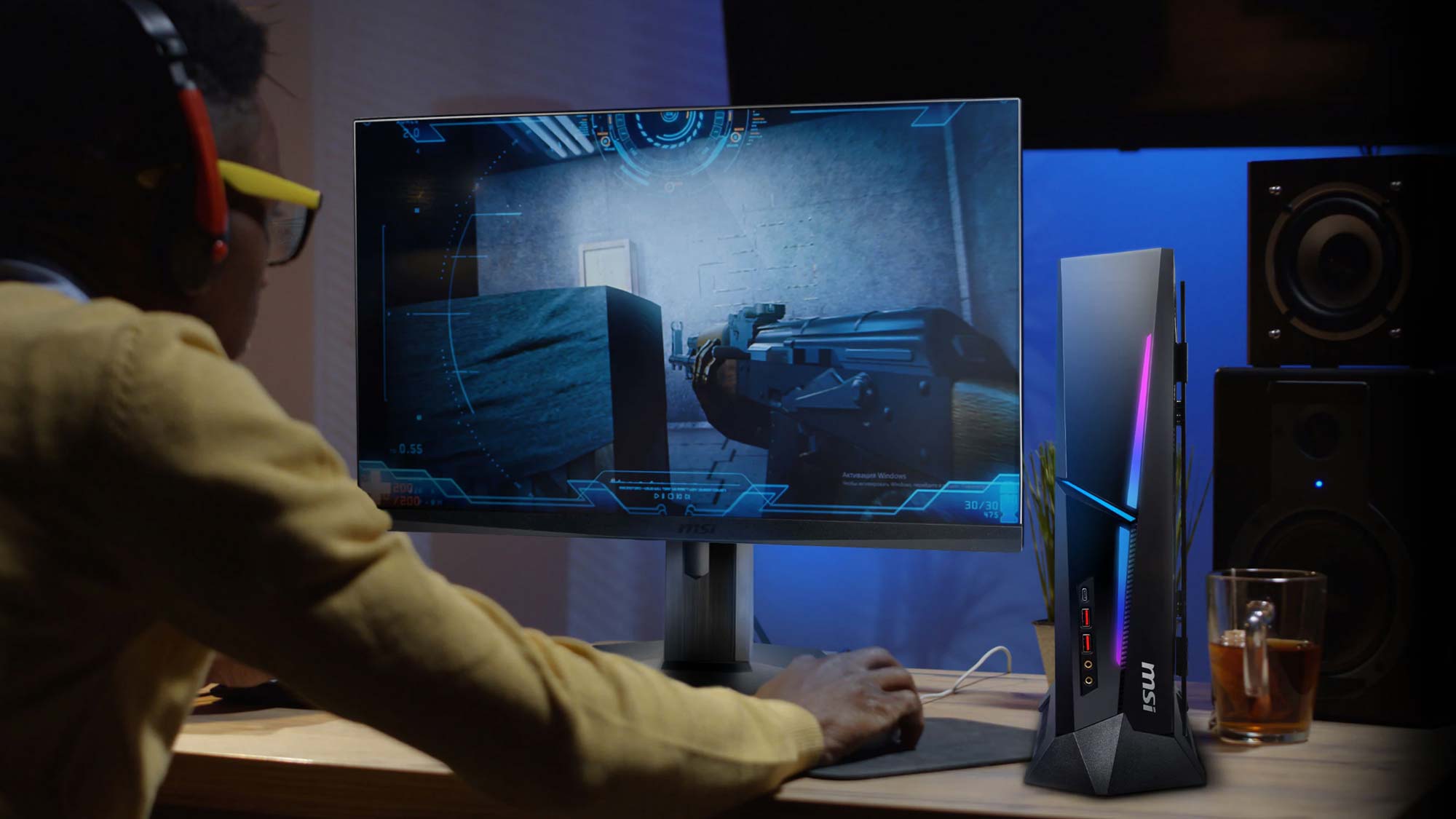
In terms of performance, the Trident X works beautifully. I tested the system with a 1080p monitor, where it effortlessly hovered between 100 and 144 frames per second for every game I tried, even with the graphics turned up as high as they would go. Whether I was gunning down foes in Doom Eternal, building armies in Age of Empires II: Definitive Edition, building decks in Thronebreaker: The Witcher Tales or completing quests in World of Warcraft, performance was smooth and graphics were gorgeous across the board.
Our benchmarks backed up my qualitative experience. On 1080p monitors with graphics settings turned all the way up, the Trident X ran Assassin's Creed Odyssey at 85 frames per second, Borderlands 3 at 110 fps, Grand Theft Auto V at 134 fps and Shadow of the Tomb Raider at 120 fps.
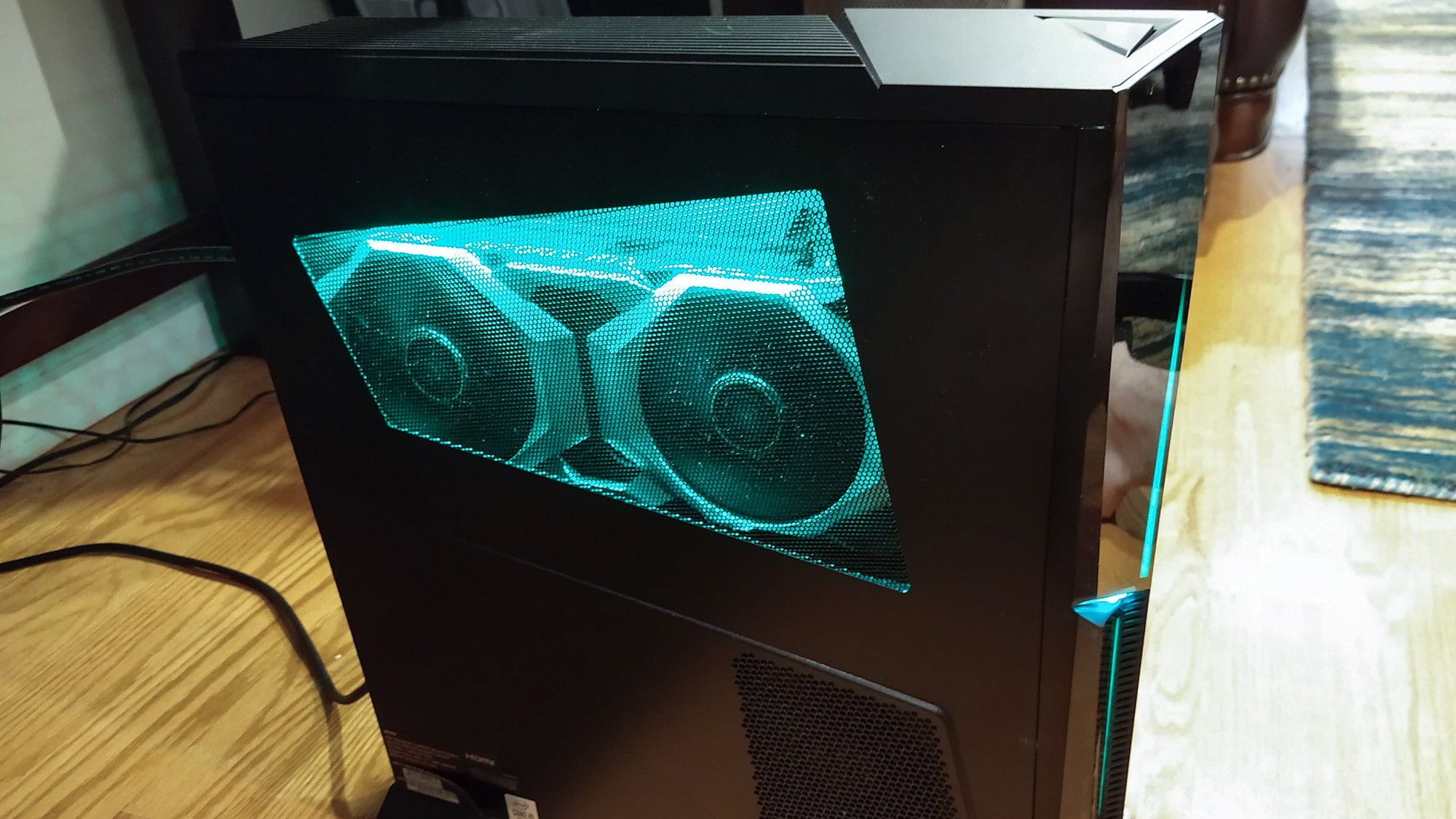
We haven't yet reviewed a machine that's directly comparable to the Trident X yet, but compare and contrast with last year's Alienware Aurora R10 (which also featured an Nvidia GeForce RTX 2080 Ti GPU), which scored 88 fps for Far Cry New Dawn and 80 fps for Red Dead Redemption 2, compared to the Trident X's 109 fps and 85 fps, respectively. One year of hardware improvements can make a difference.
Of course, running games at 1080p is only one part of the equation. In 4K with similarly demanding graphical settings, Assassin's Creed Odyssey earned 52 frames per second, Borderlands 3 earned 43 frames per second, Grand Theft Auto V earned 45 frames per second and Shadow of the Tomb Raider earned 44 frames per second. None of these numbers quite accomplishes the 4K/60 fps gold standard, but that metric should be achievable if you're willing to make some compromises in textures, draw distance and similar settings.
Against the Aurora R10, the Trident X had mixed success in the 4K category. The Aurora R10 achieved 71 fps on Far Cry: New Dawn and 41 fps on Red Dead Redemption 2, while the Trident X earned 77 fps and 30 fps, respectively.
From both a qualitative and benchmarking perspective, the Trident X is a powerful machine that runs demanding games smoothly, even at high settings. It's not unequivocally the most powerful thing on the market, but it's good enough to handle any game you can throw at it.
MSI MEG Trident X review: Overall performance
Like most gaming rigs, the MSI MEG Trident X isn't fazed by everyday productivity, Internet browsing and media streaming activities. Even with Microsoft Word, Slack, MSI Dragon Center, Spotify and three tab-filled instances of Chrome running simultaneously, plus dozens of background processes, I basically couldn't get the system to use more than 10% of its CPU and 15% of its RAM unless I was running a video game. Movies and TV shows streamed beautifully; music played without a hitch. I used the Trident X as my primary work system for two weeks, and I never missed a beat on an important assignment or high-res livestream.
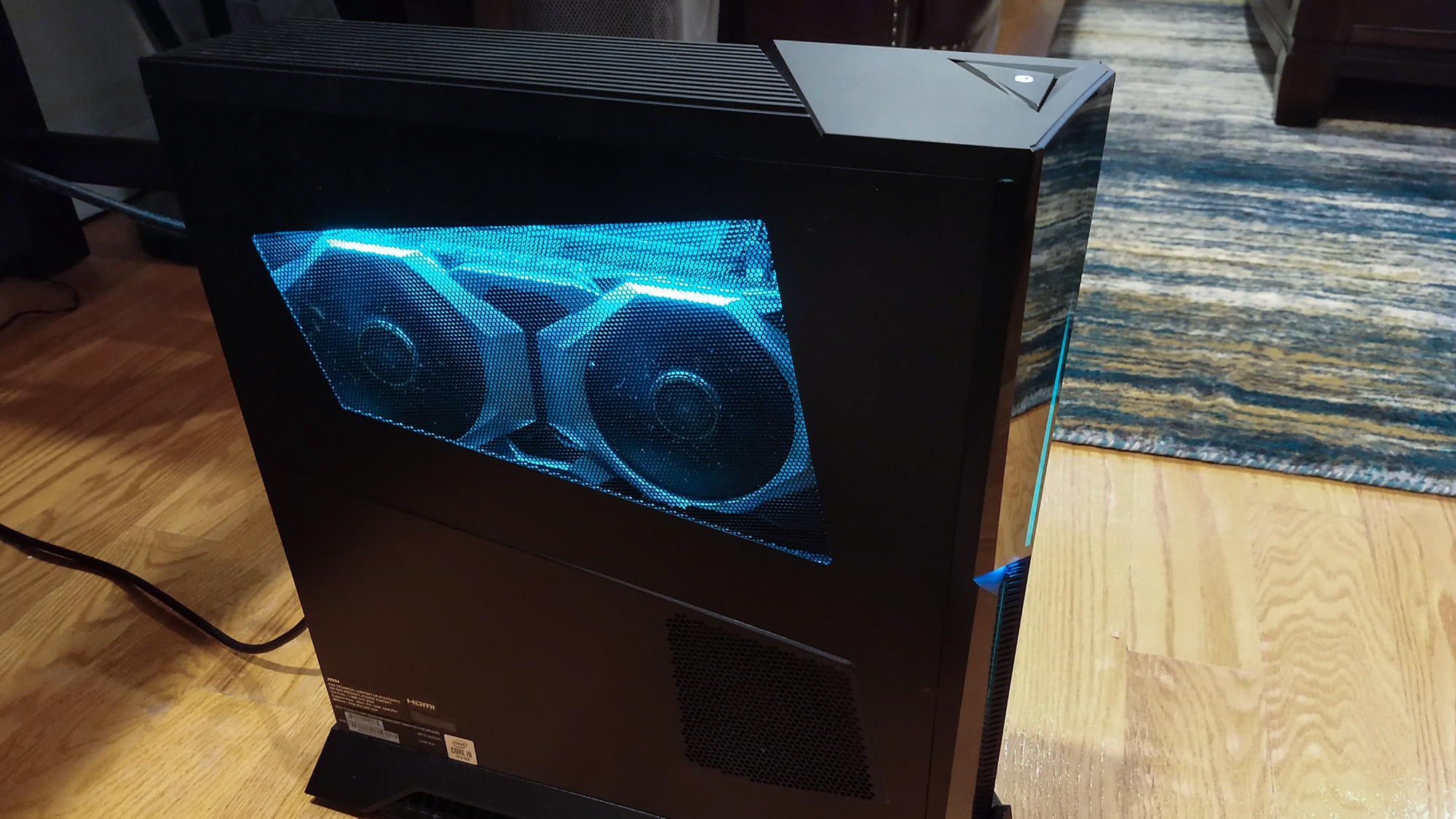
In terms of metrics, the Trident X was able to copy 5 GB of files from a thumb drive in 4.0 seconds, for a rate of 1,275 MBps. The Aurora R10 took 5.4 seconds, or 920 MBps. Transfer speed isn't the be-all, end-all of productivity tasks, but it's a good metric for how well the system performs overall, and 5 GB in 4 seconds is pretty darn fast.
Likewise, the Aurora R10 outperformed the Trident X in terms of some synthetic benchmarks, such as the Geekbench 4.3 test (40,378 for the Trident X, 52,626 for the Aurora R10). On the newer Geekbench 5.2 test, the Trident X earned 10,490, but we don't have any systems against which to compare that just yet.
MSI MEG Trident X review: Software
The MSI MEG Trident X comes with a fairly clean installation of Windows 10, with just some extra MSI programs and a Norton security suite. To control the Trident X's lighting and monitor its performance, MSI Dragon Center is a decent enough program. You can also use Dragon Center to switch among profiles optimized for certain tasks, such as "Extreme Performance," "Silent" or "Creator Mode." It's fine, although you could disable the program completely and not miss much.
But it’s Norton that earns most of my ire. Norton is an unbelievably aggressive program, putting a layer of security between you and every single page or file you want to see online, making something as simple as downloading a file that you uploaded yourself into a mess of notifications. You can't even turn the software off if you find it obnoxious; you have to uninstall it completely. It's an incredible pain to use, especially since you don't even get a full version of the program, just a free trial that nags you about signing up frequently. Get rid of it and use the built-in Windows Defender, which has gotten considerably better in recent years, instead.
MSI MEG Trident X review: Peripherals
No matter which version of the MSI MEG Trident X you buy, it will come with the MSI Clutch GM11 Mouse and the MSI Vigor GK30 Keyboard. Without going into exhaustive detail on either one, the mouse is OK; the keyboard is not.
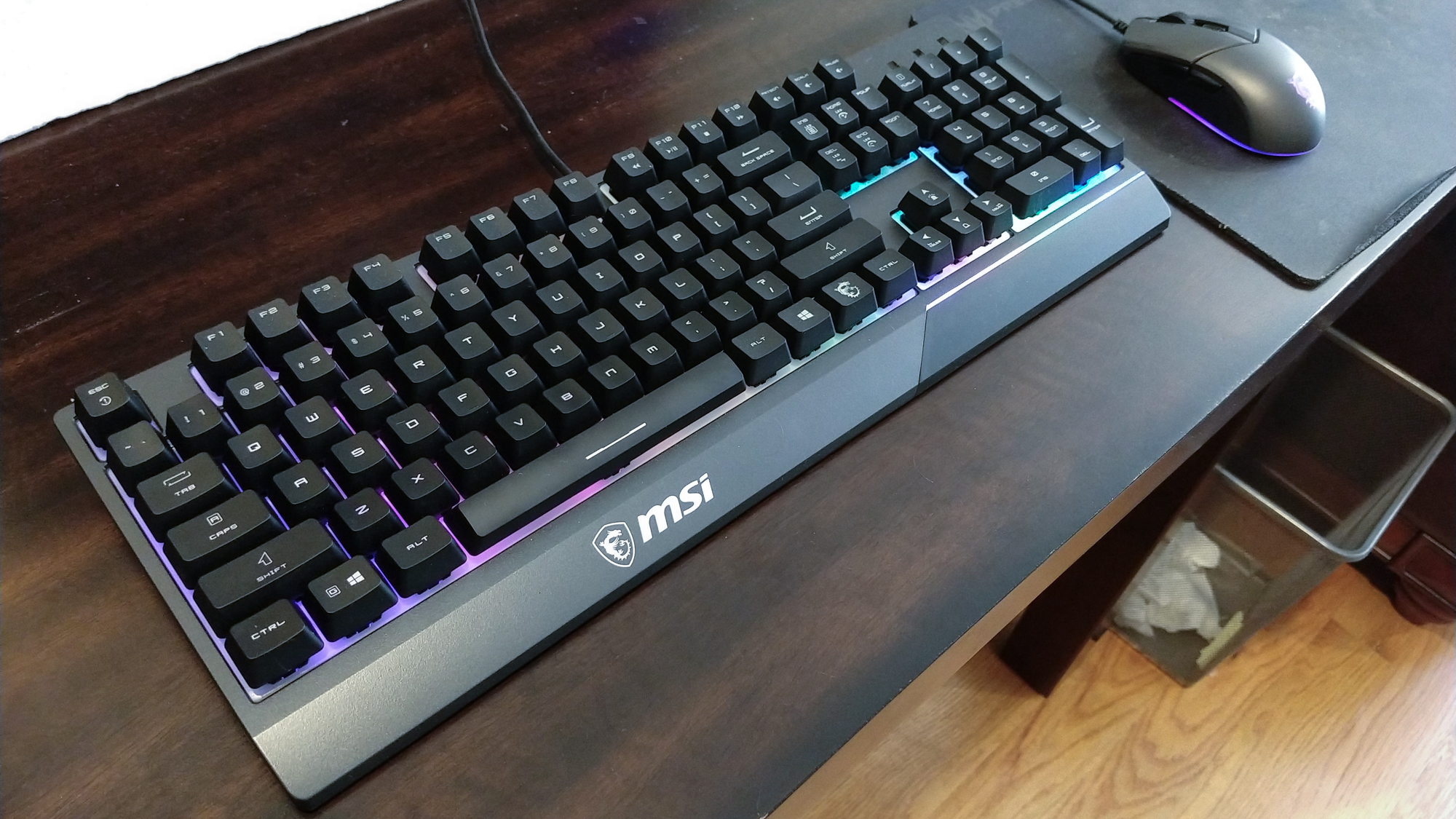
The Clutch GM11 is technically a gaming mouse, although it's stripped of the features that often make gaming mice great. It has two thumb buttons, a button that adjusts dots-per-inch (DPI) sensitivity and RGB lighting in the MSI logo on the palm rest, as well as in an LED strip on the bottom of the mouse. You can use the Dragon Center software to reprogram its buttons. But that's about it. It doesn't have any textured grips, tunable weights, swappable panels, wireless capabilities or software profiles. At best, it gets the job done; at worst, it's a placeholder until you can invest in something fancier.
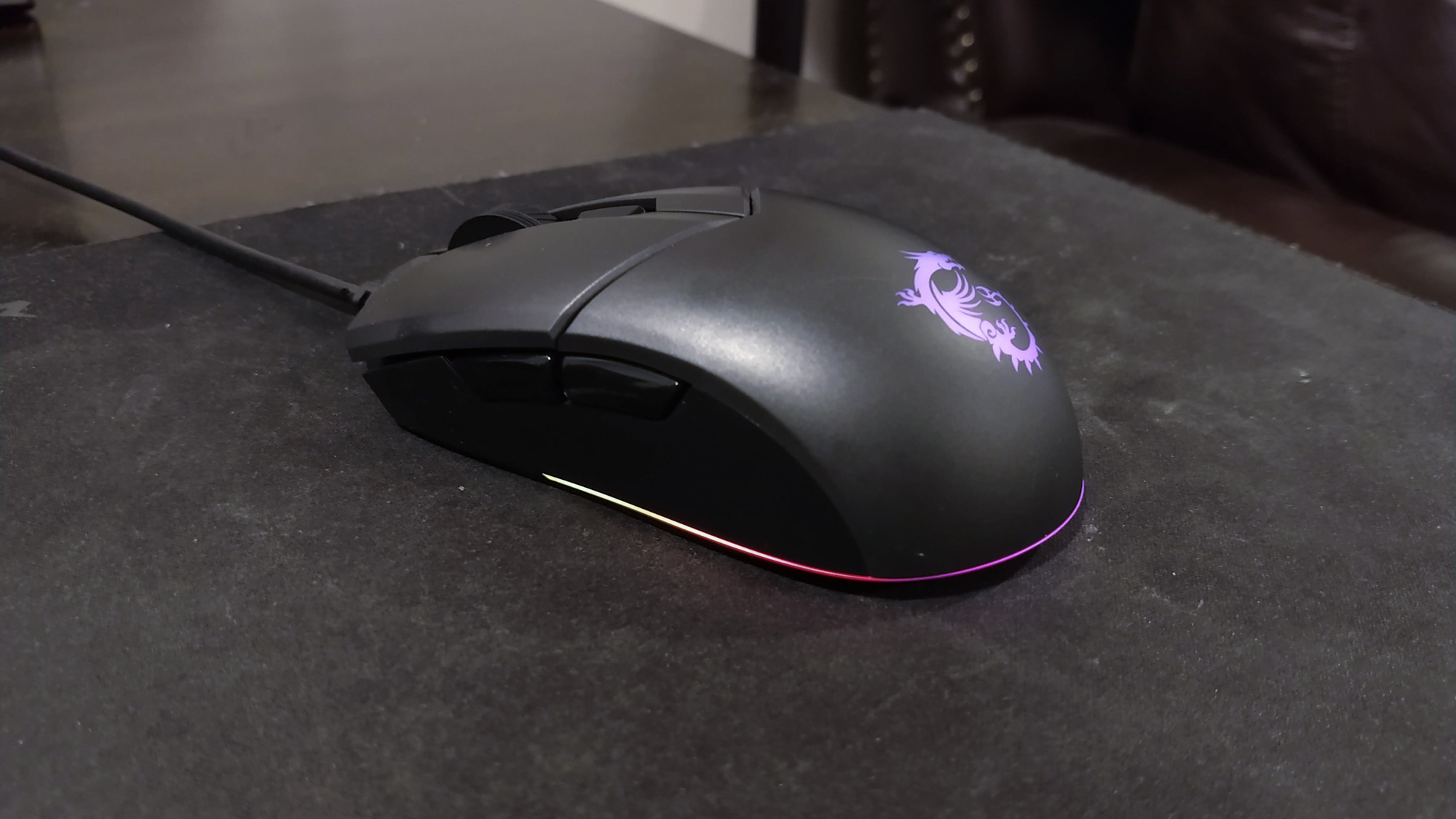
The Vigor GK30, on the other hand, is one of the more unpleasant gaming keyboards I've used lately. It clearly wants to be a premium mechanical gaming keyboard, but takes every shortcut on the way there. The no-name, linear key switches pull off the neat trick of being both extremely mushy and extremely loud. My partner actually complained that the keyboard kept her awake from across the entire apartment and behind a closed door, which is new.
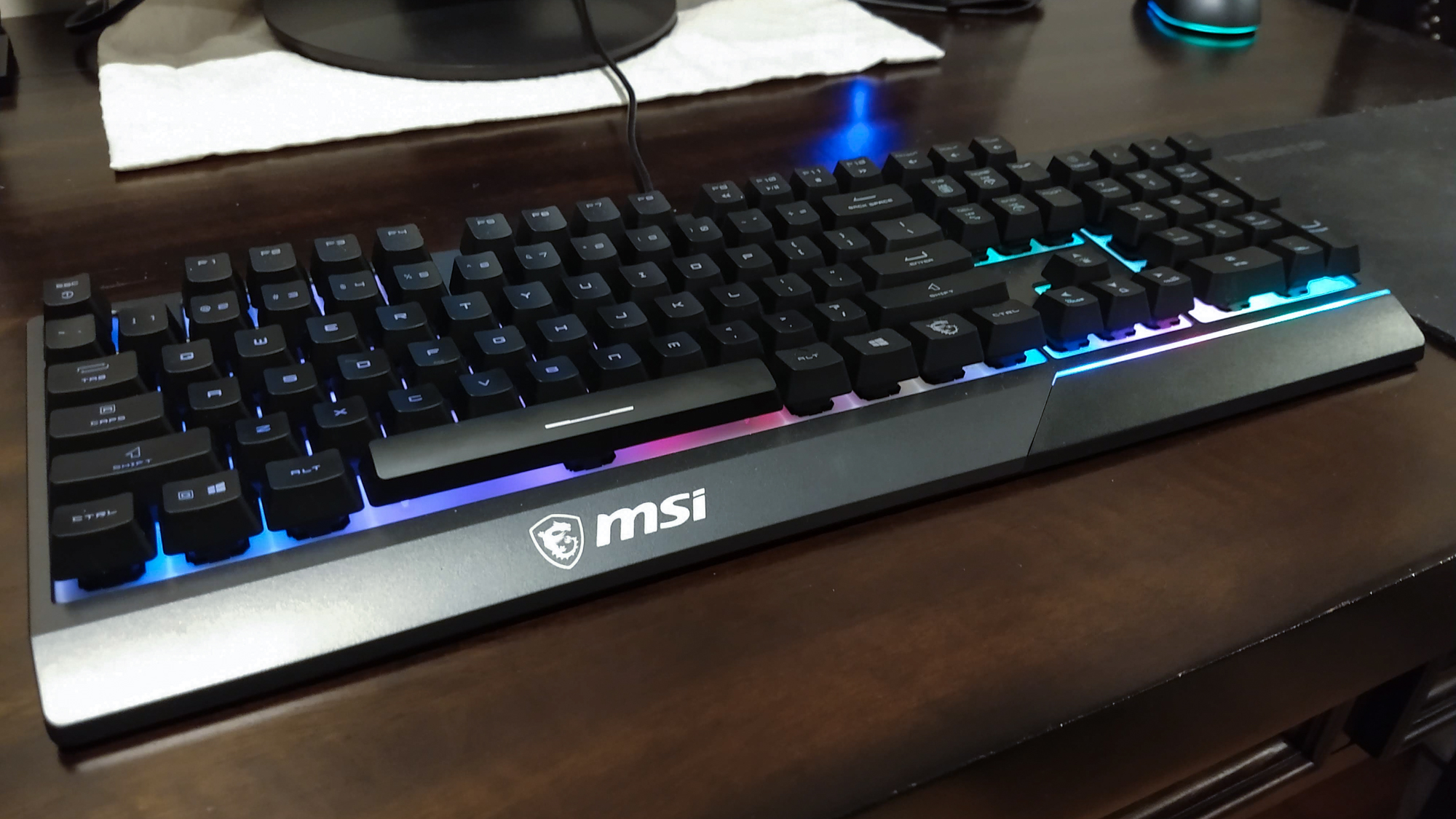
Instead of per-key lighting, you get a handful of different zones with dull LEDs. Like the GM11, you can't program your own profiles; unlike the GM11, you can't manipulate the GK30 via software at all, meaning you'll have to rely on cumbersome, limiting keyboard shortcuts to change colors and brightness instead. There are no discrete media controls, and there's no wrist rest.
If you plan to invest in the Trident X, you can make do with the GM11 mouse. But put aside another $150 or so for one of the best gaming keyboards. You'll be glad you did.
MSI MEG Trident X review: Verdict
Between its cool appearance and strong performance, this machine earns a solid recommendation in our MSI MEG Trident X review. While the Trident X is perhaps not the absolute last word in 4K gaming systems, it's also not nearly as expensive as high-end gaming systems get.
On the other hand, it's not cheap either, and $3,200 is still a lot of money to drop on a PC. The Alienware Aurora R11 offers a much wider range of price options and an equally striking (albeit very different) chassis. Rest assured that if you do get the Trident X, you'll be able to run your favorite games at extremely high settings, and you'll likely be able to do so for years to come.
Marshall Honorof is a senior editor for Tom's Guide, overseeing the site's coverage of gaming hardware and software. He comes from a science writing background, having studied paleomammalogy, biological anthropology, and the history of science and technology. After hours, you can find him practicing taekwondo or doing deep dives on classic sci-fi.
